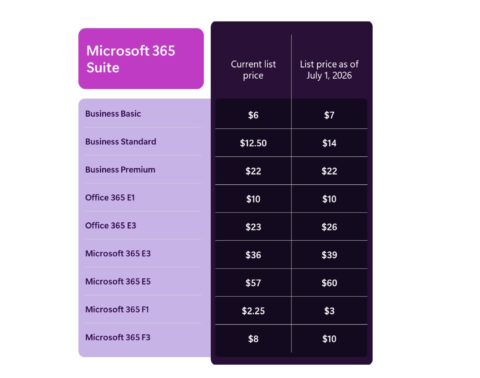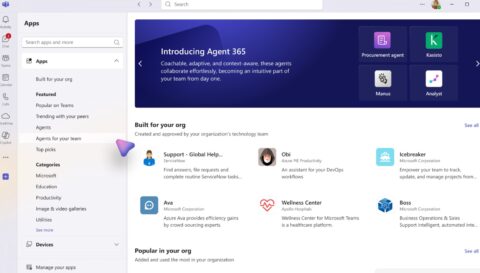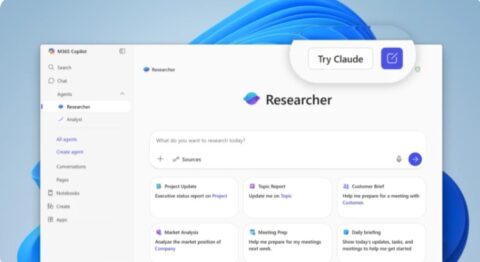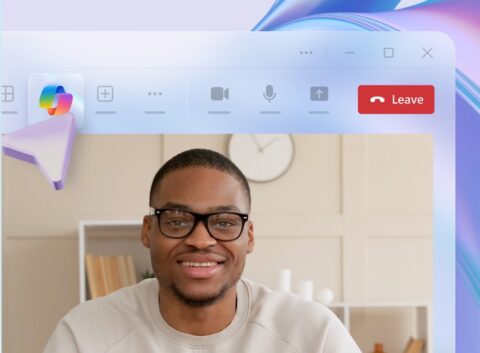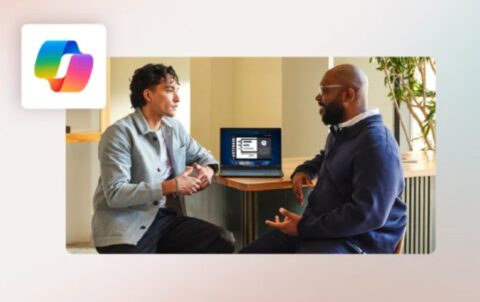July 30, 2025
BlogCIO Talk: AI in Five Years – Which Way Will It Go?

Remember the introduction of ChatGPT on that momentous day in November 2022? Since then Copilots and chatbots have sprung up everywhere, social media is flooded with AI-generated posts, and enterprise-class agent-based applications are all the rage among techies and analysts. What an extraordinary time!
I was asked recently where AI, and for that matter, enterprise computing will be in five years. With the rapid pace of change it’s obviously more challenging than ever to say – but after some thought here’s where I came out.
No warranties or guarantees given or implied!
The Conservative View
I provided two possible views: a “conservative” one, in which AI is gradually and incrementally absorbed into the enterprise ecosystem, and a “radical” one in which AI changes everything.
The conservative view holds that, over time, applications absorb AI functionality, and we come to expect AI in all of them; in short, AI capabilities become an application convention just like, say, the Office ribbon or Copy/Paste. Copilots gradually improve. They connect to every application and data source in the enterprise in a safe, secure fashion (and as I describe in my discussion on data governance, protecting your data could in fact, occupy all five years!). Copilots live not just in Office but everywhere; perhaps Microsoft will even offer a “Copilot certification” for third-party apps to use its libraries and models and the Copilot trademark.
Less rote, pedestrian code is written by humans but, conversely, a higher premium is placed on developers and architects who can piece together the Copilot or Claude Code or Gemini code fragments into ever higher- and higher-value applications. Profound coding knowledge is still essential, but more and more developers check AI-generated code – rather than write it.
In this view, autonomous LLM-powered agents achieve a certain level of acceptance but (like Lotus Notes Agents, introduced way back in 1993) compete with existing and entrenched RPA apps. Moreover, users and enterprises, perhaps rightly, have limited trust in agents to perform mission-critical functions given their nondeterministic, statistical, probability-based nature and their tendency to hallucinate.
The Radical View
AI in this view changes everything in the next five years: we won’t recognize the new world of computing.
Imagine, for a moment, a contact center application completely comprised of agents.
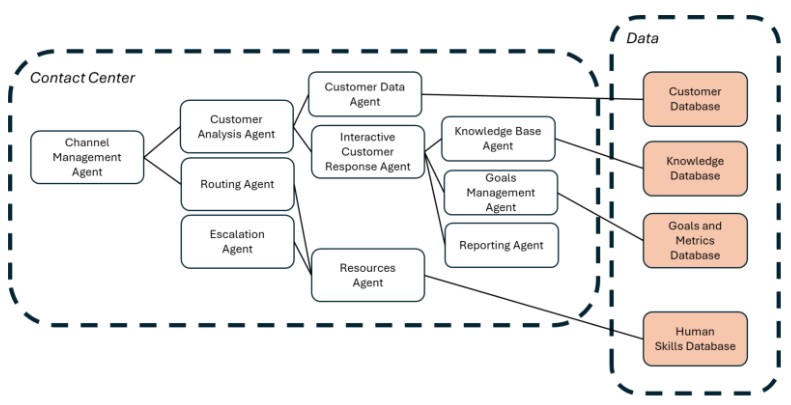
In this completely-made-up example, a Channel Agent manages the various customer contact channels (phone, email, etc.), perhaps assigning different priorities to regions at different times of the day. A Customer Analysis Agent identifies the customer and perhaps determines the likely cause of the call; a Routing Agent sends the call to either the agent or human most likely to successfully resolve it; and so on.
These agents are continuously trained on the vast amounts of (now well-governed) data in the enterprise, allowing them to quickly build and adapt data models, identify emerging trends and adjust business processes accordingly – and in general relieve IT of much of its traditional tedium.
IT Development in Flux
In theory, “developers” of the future create no procedural code; coding becomes a lost, or rare, art. Because all the agents are programmed, in effect, in English, the application can be completely customized to the very specific needs – indeed, nuances – of the organization, and (again in theory) could be easily changed as business needs mandate. There are no packaged ERP or CRM applications – rather, vendors provide infinitely customizable agents which IT teams with “SDKs” describing how to create the appropriate prompts.
Nevertheless, IT technologists remain a valuable and scarce resource. Profound knowledge of the inner workings of LLMs, the mechanics of exposing data safely and connecting LLMs to them, keeping these new ecosystems of agents and data secure, and creating the necessary goals and reward systems to achieve business goals: all these valuable new skills power the new IT.
What About Office?
Remember: the only reason Excel, PowerPoint, and Word are separate applications is because they were created in a time when PC memory maxed out at 640 kilobytes. Now most enterprise laptops sport (minimally) 16 gigabytes, or over 26,000 times that original, oh-so-primitive capacity.
Today, how many of you have all three open right now? (I do.) And we still need to know the silly, arcane, and dated methods of cutting-and-pasting between them. (Edit / Paste-Special? Really?)
So perhaps all the metaphors upon which we depend today undergo a growth spurt: with no need to respect hardware limitations, and LLMs’ extraordinary ability to quickly ascertain user intent, we no longer need separate applications for word processing, presentation graphics, and numerical analysis all possessing unintuitive menu hierarchies, quirky ribbons and distinct UIs.
In other words, could the Office apps dissolve and be replaced by…something else? A unified, all-in-one application for content creation, presentation and dissemination? (Maybe we’re already seeing the beginnings as OpenAI and Perplexity (and even Microsoft, sort of) introduce their own AI-native browsers).
Which Will It Be?
It’s my assertion that the mission of IT, ultimately, is to give control of the business to the business; that is, to enable, in real time, digital systems to respond to business leaders’ direction. Why couldn’t a CEO simply speak into some UI, “Decrease the price of our Widgets in Japan by 5% tomorrow – and provide an analysis the next day showing which market demographics and segments responded?”
So, which will get us there faster: incremental evolution or a revolution in IT? Of course, I don’t know – but I suspect we’ll see a continuing tension between a natural IT conservatism (if it works, don’t break it) set against the rapid, nonstop acceleration of AI – and the overarching necessity of driving competitive advantage.
Scary, fun, or just plain crazy? Drop me a line at bbriggs@directionsonmicrosoft.com and let me know what you think.

